Painting history: Mechanics Hall readies new portraits of four 19th century Black leaders
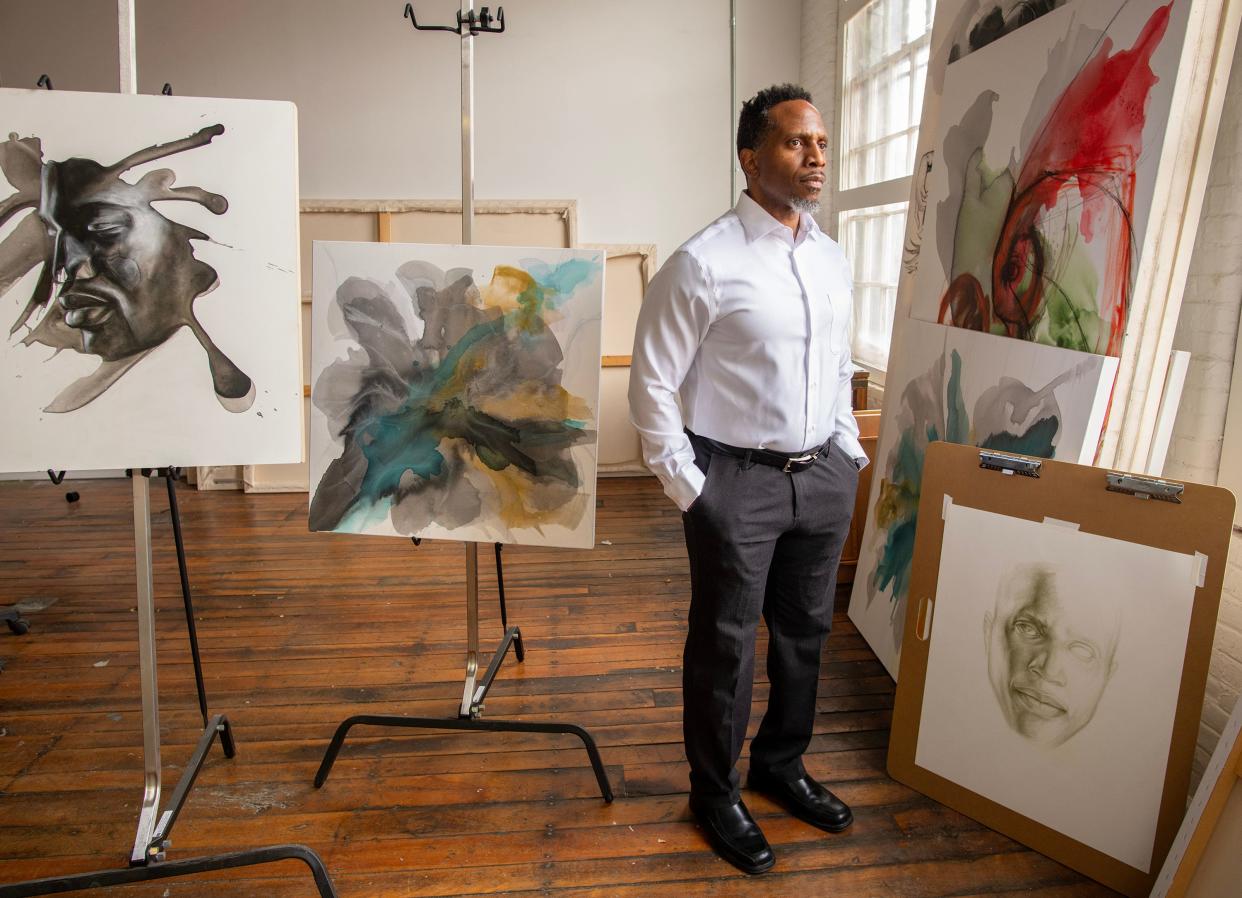
- Oops!Something went wrong.Please try again later.
- Oops!Something went wrong.Please try again later.
When respected cultural advocate Gloria D. Hall was honored with an arts and humanities award in a ceremony at Mechanics Hall in 2004, she expressed her gratitude and appreciation. Then, looking up from the stage at the stately portraits of local historical figures that line both sides of the hall — all white people, mostly men — she shared a sentiment publicly that many other hall visitors had expressed privately over the years.
“I said, ‘If you look around this room, there are no folks of color in these portraits,’ ” Hall, who is Black, said in a recent interview. “Diversity was obviously missing, and I was just trying to draw attention to it. I felt it would add to the visual landscape, and I think that’s important.”
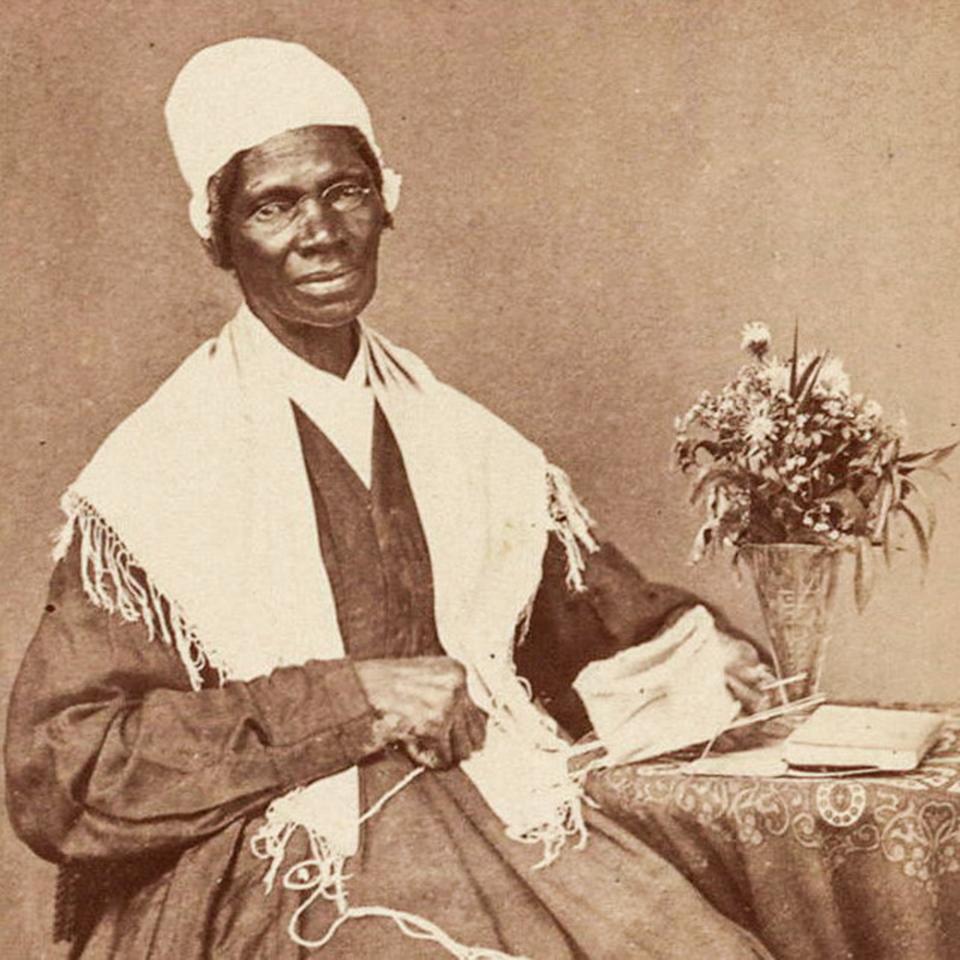
At the time, plans and discussions were already underway to rectify the situation. Finally, in 2020 a Mechanics Hall Portraits Project was announced along with a Portraits Project Committee to oversee the process. Hall is co-chair of the committee. Last March, three artists were commissioned to paint portraits of important 19th-century Black Americans that will hang among the other portraits that have long graced the iconic hall.
The commission of the three paintings includes: one depicting Worcester business owners and abolitionists William Brown and Martha Ann Tulip Lewis (Brown), painted by Brenda Zlamany of Brooklyn, New York; one depicting former slave, abolitionist and women’s rights activist Sojourner Truth, painted by Manu Saluja of Long Island, New York; and one depicting former slave and abolitionist Frederick Douglass, painted by Imo Nse Imeh of Holyoke. The new portraits are expected to be installed in the Great Hall by February 2024. Fundraising is ongoing to cover the $500,000 cost of the project.
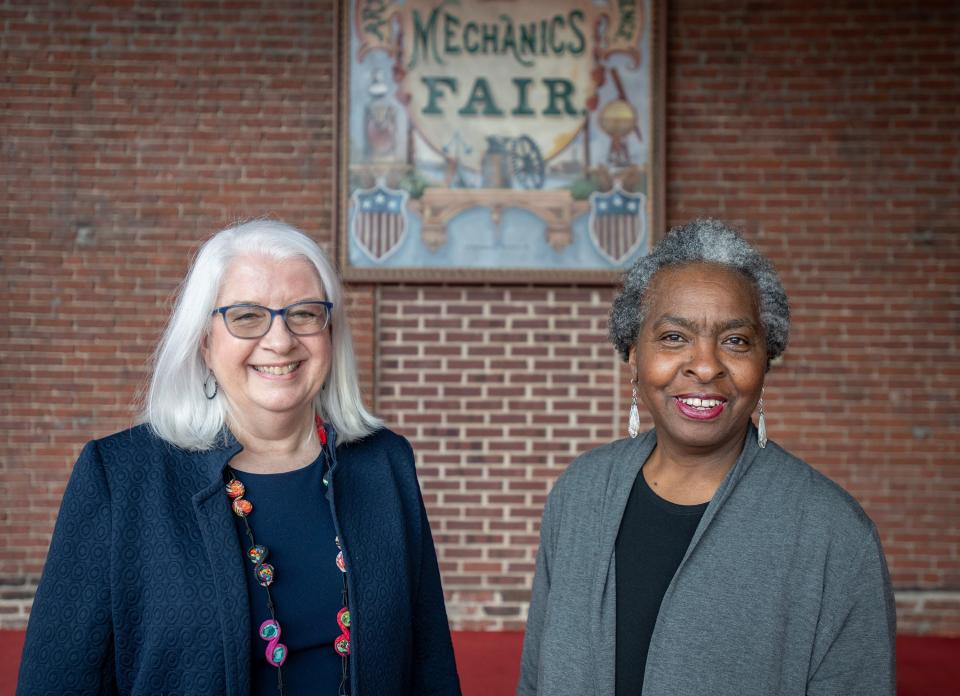
'A hotbed of abolitionist activity'
The historic hall, owned by the Worcester County Mechanics Association, a venerable educational and charitable organization, is a popular concert and event venue that is world renowned for its fine acoustics. Artists as varied as cello virtuoso Yo Yo Ma, banjo phenom Béla Fleck, and jazz great Pat Metheny have performed on its stage in recent times, as did Frederick Douglass shortly after the hall was built in 1857. Worcester then was a hotbed of abolitionist activity.
“Because Mechanics Hall is the historic treasure of the city of Worcester, and because the activity in this hall really defined what was happening in Worcester, especially the transformational time of the 1840s to 1870s, it was important for us to broaden the story of the history that took place in this city,” Kathleen Gagne, Mechanics Hall executive director, said. “So, adding impactful Black Americans of the 19th century to the war heroes, industrial leaders and others in the portrait gallery became a very important focus for us.”

The six-month artist-selection process was coordinated by Hall, a Worcester-based preservationist and public art administrator (Art in the Park, Art in the Yard). The top-notch selection panel included Dorothy Moss, Ph.D., curator of painting and sculpture at the National Portrait Gallery in Washington, D.C.; Kelli Morgan, Ph.D., specialist in American art and visual culture, professor of the practice, and inaugural director of curatorial studies at Tufts University; Toby Sisson, M.F.A., artist and associate professor and program director of studio art at Clark University; and James A. Welu, Ph.D., director emeritus of Worcester Art Museum.
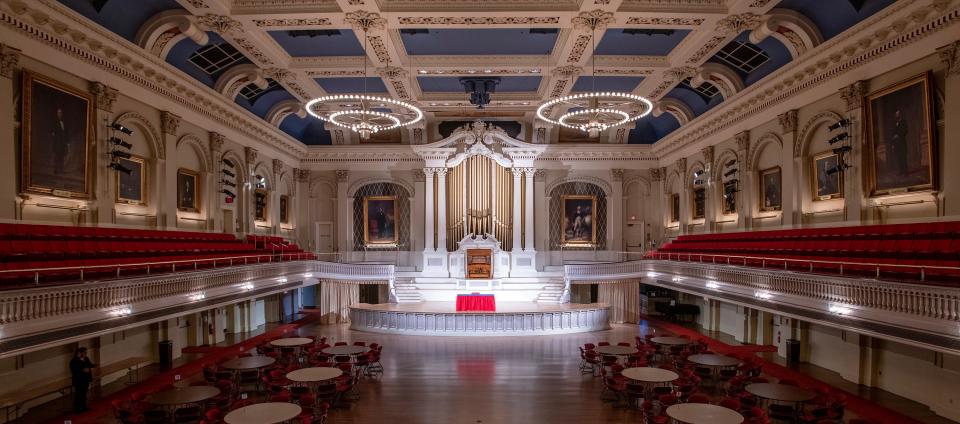
Capturing Douglass' Spirit
One of the portraitists, Imo Nse Imeh, a visual artist and scholar of African Diaspora art, was interviewed for this story about the daunting task of capturing a larger-than-life historical figure on canvas. Frederick Douglass (1818-1895) was one of the most prominent civil rights figures in history and considered by many to be one of the most influential Americans of the 19th century. After escaping from slavery, he spent the rest of his life advocating for social justice, tirelessly giving eloquent and compelling lectures on the subject, which sharply divided the nation at the time (and many would say still does).
Imeh, a professor of art at Westfield State University, usually creates large-scale paintings using sweeping motions informed by waves of feelings. “There is something performative about working larger and using your whole body, even your feet climbing a ladder to get to the higher points,” he said. “It becomes a physical activity of creating the work.” His usual canvas size of about 7 feet by 9 feet had to be trimmed to 5 feet by 7 feet to conform with the portraits already in the hall.
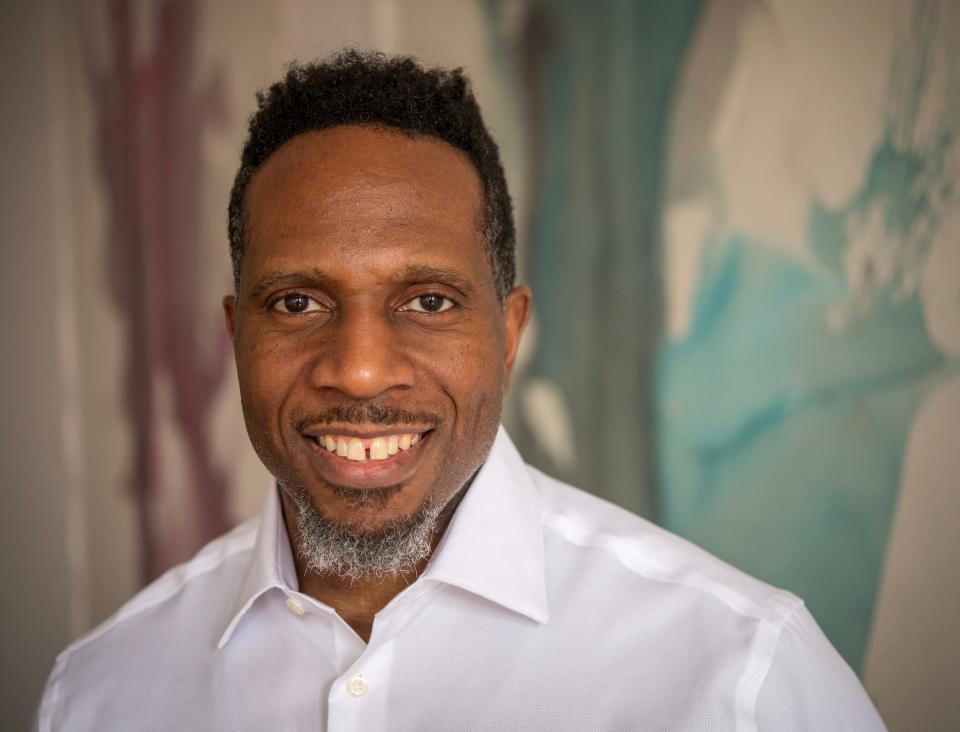
“This work is actually smaller than my current typical work, but it still is a large work, so I still have found a similar performative quality while creating this portrait of a giant of American history,” Imeh said, in the April interview when the portrait was a work-in-progress. Mechanics Hall has asked the artists are expected to finish their works by October.
Giving the portrait the sense of presence and historical stature Douglass deserves is one of the objectives Imeh is trying to achieve. “I'm trying to make sure that I'm not only capturing just his features so that it looks like him,” he said. “I'm interested in capturing the spirit behind who he was and everything that he ends up achieving, and the trails that he winds up blazing for so many others who have walked down the path of civil rights for the benefit of all humanity.”
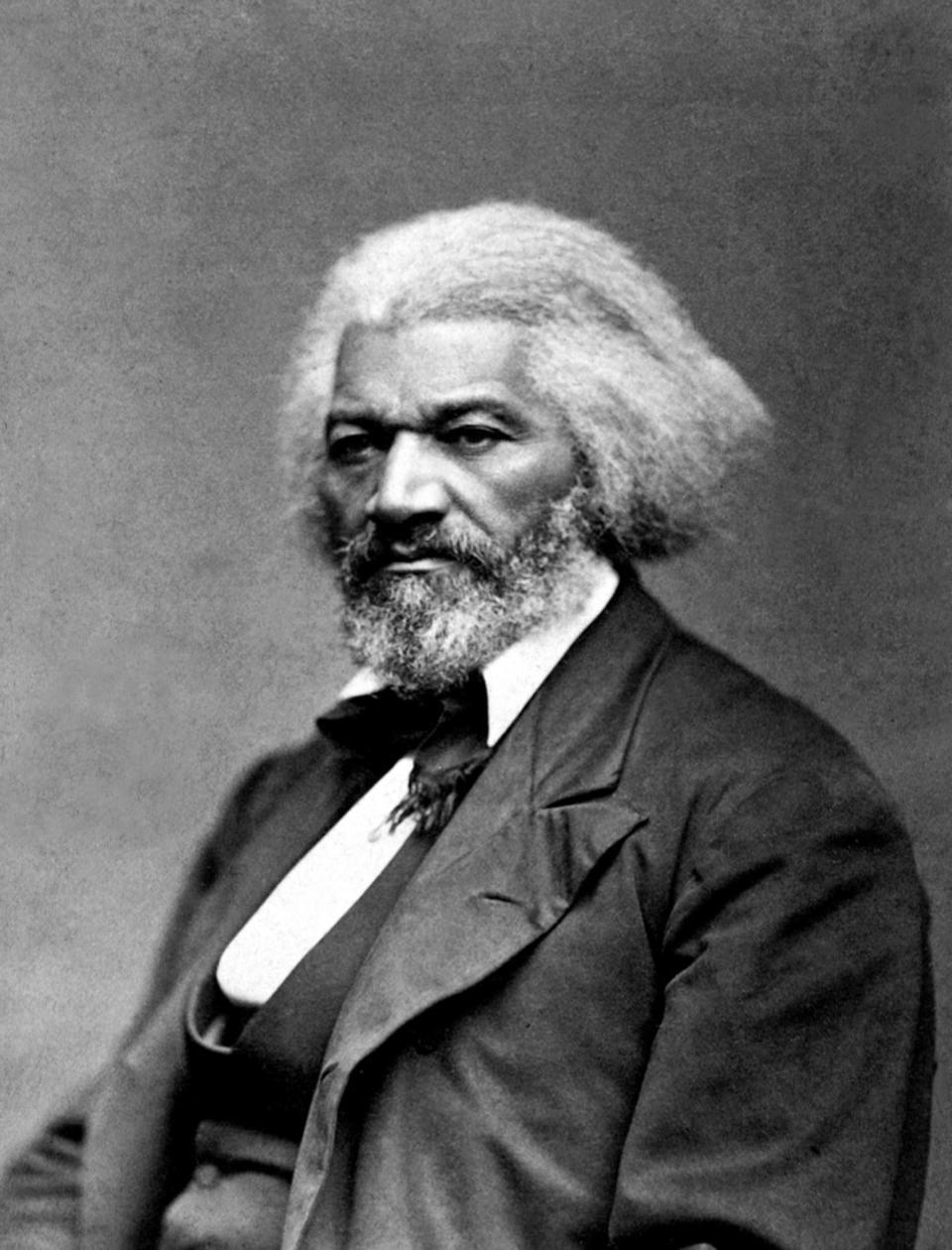
That sounds like a tall order, but Imeh is undeterred.
“The kind of work I typically do this thematic, topical work around Black histories and Black bodies and bodies as narratives,” he said. “I think there's a way that, tapping into my usual approach, will make this portrait that much more impactful. So, I find this very exciting, however daunting it might be.”
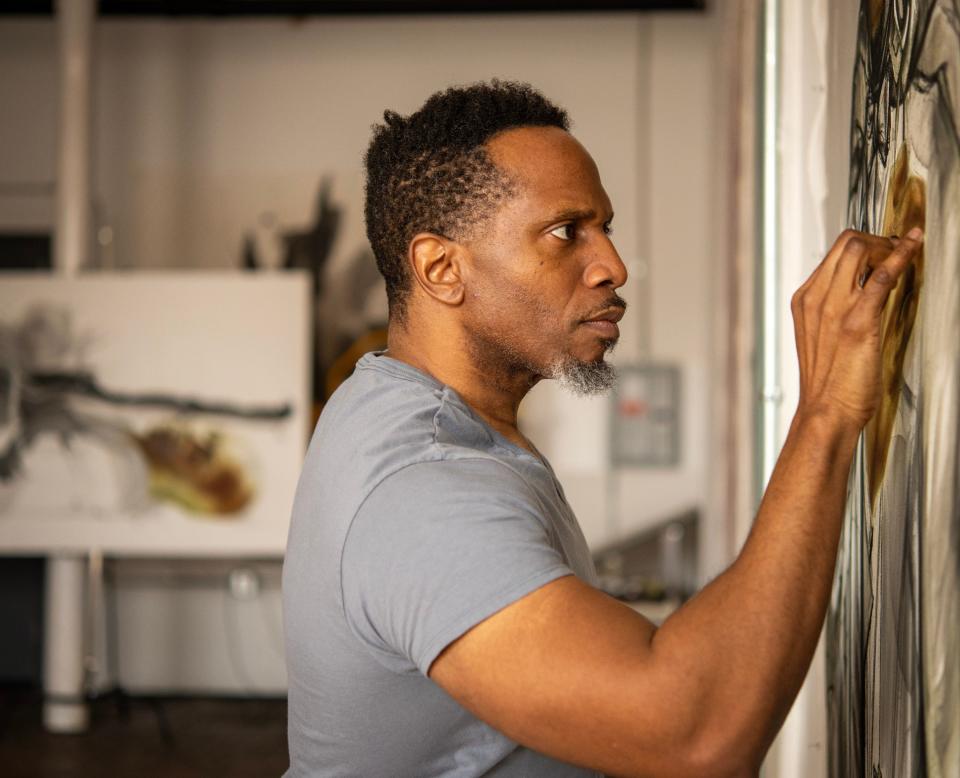
Imeh’s status as the son of immigrants also figures into the respect he feels for Douglass and the portrait project that has more deeply connected him to one of his childhood heroes.
“I'm particularly thrilled to be a part of this project,” he said. “I'm American-born but both my mom and my dad are from Nigeria. I'm very connected to my Nigerian roots and I don't take it lightly that I was selected as a first-generation African American to render the portrait of this very important figure who represents the story of African Americans who were enslaved in this country. My family didn't come over in the way that Frederick Douglass did, but our histories are still very connected. So, I view this commission as an opportunity to unite my history with his to tell his amazing story.”
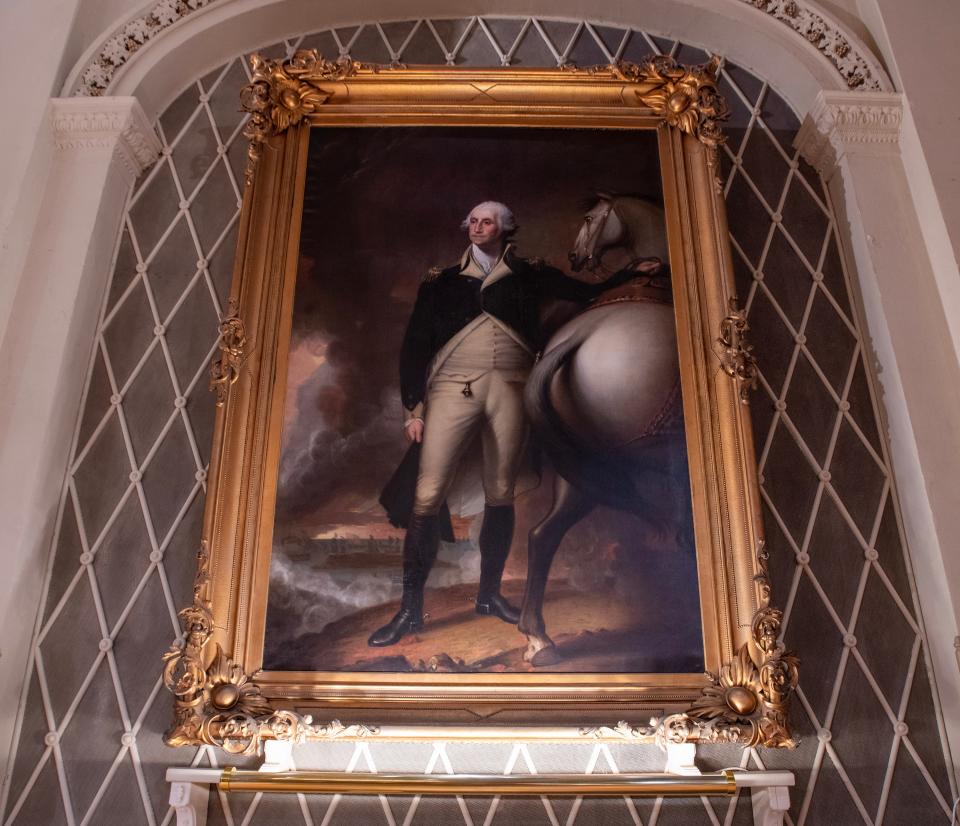
As Imeh researched Douglass before starting the painting, he found his childhood admiration for him expand exponentially. “He was somebody who did the work,” he said. “He did the work to make life easier for so many others. He did the thinking work, the philosophical work, and the groundwork. He laid the pathways for so many.”
“I feel if this opportunity has changed me, and I feel like it will change me more and more as I'm developing the work,” he said. “It reminded me to remain grounded in my convictions as a Black man, as a Black arts advocate, and to continue to push forward because somebody before me did.”
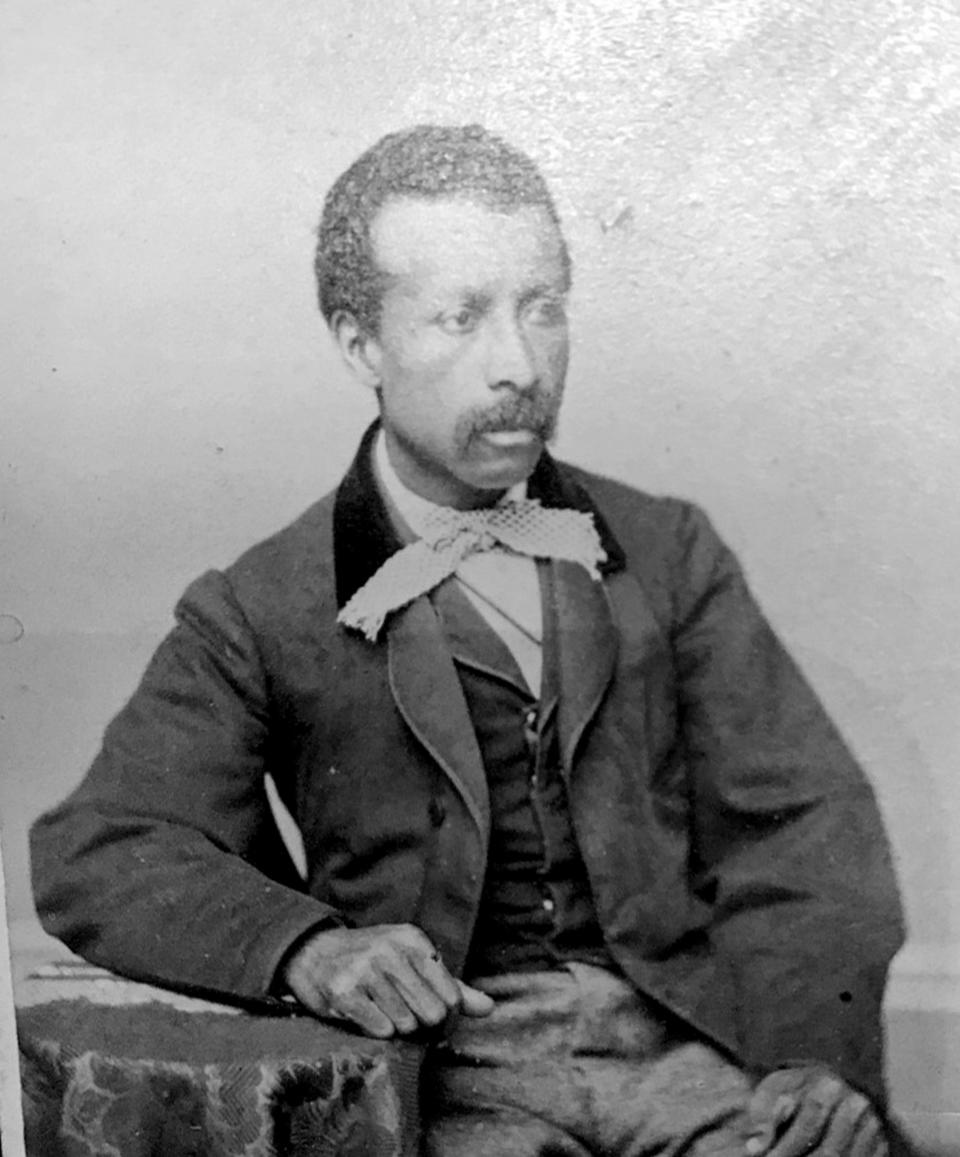
Which is exactly the lesson Gagne hopes visitors to Mechanics Hall glean from the new portraits, especially the groups of schoolchildren who regularly come through.
“Our portraits are documents of history,” she said. “The person in each of them has a story, as will the new portrait subjects. The point of them is to inspire. The point of the whole building is to inspire people to think bigger thoughts, to gain a wider vision. It’s as if they’re saying, ‘Look at what we did. You can do this too.’ ”
Some biographical information on the subjects of the other two commissioned portraits (the Browns will be painted together as a couple):
William Brown (1824-1892) was a successful 19th-century Worcester upholsterer and carpetmaker. A free man, Brown came to Worcester from Boston, establishing his trade here in 1841. He and his wife, Martha, operated the business located in the original Central Exchange Building in the heart of downtown. William Brown was first recognized by the Worcester County Mechanics Association (WCMA) in 1849 for the skill he exhibited at that year's Mechanics Fair. In 1867, he became the first Black member of the WCMA. His son, Charles, an expert draper and interior decorator, also became a WCMA member.
According to family tradition, William Brown was involved with the work of the Underground Railroad. Upon the death of his wife, Martha, William received letters of condolence from such influential men as Frederick Douglass, Stephen Salisbury III, Charles Washburn and Edward Everett Hale, indicating the respect of his friends and colleagues. William was a successful inventor as well. He held patents on his own inventions, including “Brown's Patent Fruit Picker” (1867) and “A New Improved Sofa Bed” (1868). The fruit picker was mentioned in an 1867 issue of Scientific American.
Martha Tulip Lewis Brown (1821-1889), a free woman of African American heritage, was married to William Brown and was his partner in life, business and abolitionist work. She worked alongside William and later their son, Charles, in the family carpet and upholstery business. She was the first woman of color to become a member of the Ladies Benevolent Society of the First Unitarian Church of Worcester. She and other women raised money for the welfare of freed slaves and fugitive slaves. She was very likely involved in Underground Railroad work with her husband and his colleagues, which included Frederick Douglass.
Sojourner Truth (1797-1883), born Isabella Baumfree, is considered one of the two most impactful Black women of the 19th century, along with Harriet Tubman. Already in middle age, Sojourner Truth began her 30-year speaking career in Worcester at the first National Women’s Rights Convention in 1850. She was an abolitionist and passionate advocate of women’s rights. She also advocated for temperance, an important social issue among laborer families. Born into slavery in Ulster County, New York, Truth gained her freedom in 1826 by walking off the farm where she was enslaved. In 1828, she sued a white man for illegally selling her son and became the first black woman to win a court case of that nature. Truth was a member of the Northampton Association of Education and Industry, an abolitionist and utopian community in Massachusetts where she lived for several years.
This article originally appeared on Telegram & Gazette: Mechanics Hall set to hang first portraits of Black historic figures

